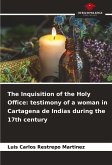When the Spanish Empire incorporated the American territories to its dominions, it needed to connect the main towns. The Spanish armies took advantage of the Inca road network to cross the Andean geography. Later, in order to speed up communication, posts were created on these roads.Rodeo de la Cruz was one of them, which with the passing of time and the contribution of the native peoples and immigrants grew until it became a city.This text recreates the historical process of this community born on the side of the route that linked Buenos Aires-Mendoza-Santiago de Chile.Through the compilation of the individual memories of its settlers and existing documentation in official and private repositories, the historical process of the population nucleus and the institutions that arose along with it were reconstructed.
Bitte wählen Sie Ihr Anliegen aus.
Rechnungen
Retourenschein anfordern
Bestellstatus
Storno








